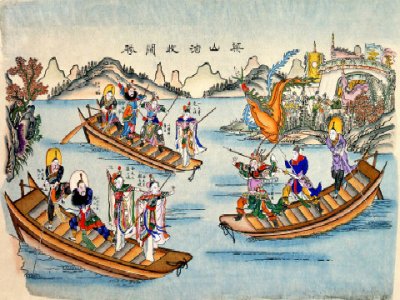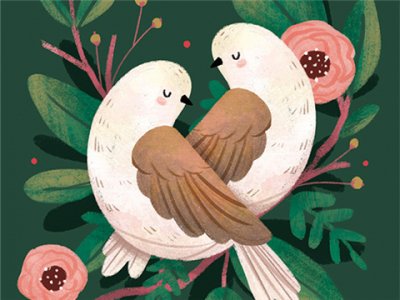2018年6月7日雅思考试题目预测
2018年6月7日雅思考试题目预测
【阅读】
READING PASSAGE 1
You should spend about 20 minutes on Questions 1-13, which are based on Reading Passage 1 below.
The wonder plant
Bamboo is used for a wide range of purposes, but now it seems it may be under threat.
A
Every year, during the rainy season, the mountain gorillas of central Africa migrate to the lower slopes of the Virunga Mountains to graze on bamboo. For the 650 or so that remain in the wild, its a vital food source. Without it, says Ian Redmond, chairman of the Ape Alliance, their chances of survival would be reduced significantly.
Gorillas arent the only local keen on bamboo. For the people who live close to the Virungas, it’s a valuable and versatile raw material. But in the past 100 years or so, resources have come under increasing pressure as populations have exploded and large areas of bamboo forest have been cleared to make way for commercial plantations. Sadly, this isn’t an isolated story. All over the world, the ranges of many bamboo species appear to be shrinking, endangering the people and animals that depend upon them.
B
Despite bamboos importance, we know surprisingly little about it. A recent report published by the UN Environment Programme (UNEP) and the international Network for Bamboo and Rattan (INBAR) has revealed just how profound our ignorance of global bamboo resources is, particularly in relation to conservation.
There are almost 1,600 recognised species of bamboo, but the report concentrated on the 1,200 or so woody varieties distinguished by the strong stems, or culms, that most people associate with this versatile plant. Of these, only 38 priority species’ identified for their commercial value have been the subject of any real scientific research to date.
This problem isnt confined to bamboo. Compared to the work carried out on animals, the science of assessing the conservation status of plants is still in its infancy. People have only started looking at this during the past 10-15 years, and only now are they understanding how to go about it systematically, says Dr Valerie Kapos, one of the reports authors.
C
Bamboo tends to grow in stands (or groups) made up of individual plants that grow from roots known as rhizomes. It is the worlds fastest-growing woody plant and some species grow over a meter in one day. But the plants ecological role extends beyond providing food for wildlife. Its rhizome systems, which lie in the top layers of the soil, are crucial in preventing soil erosion. And there is growing evidence that bamboo plays an important part in determining forest structure and dynamics. Bamboos pattern of mass flowering and mass death leaves behind large areas of dry biomass that attract wildfire/ says Kapos. ‘When these bum, they create patches of open ground far bigger than would be left by a fallen tree. Patchiness helps to preserve diversity because certain plant species do better during the early stages of regeneration when there are gaps in the canopy.’
D
However, bamboo’s most immediate significance lies in its economic value. Many countries, particularly in Asia, are involved in the trade of bamboo products. Modern processing techniques mean it can be used in a variety of ways, for example as flooring and laminates. Traditionally it is used in construction, but one of the fastest growing bamboo products is paper -25 per cent of paper produced in India is made from bamboo fibre.
Of course, bamboos main function has always been in domestic applications, and as a locally traded product it is worth about US$4,5 billion annually. Bamboo is often the only readily available raw material for people in many developing countries, says Chris Stapleton, a research associate at the UKs Royal Botanic Gardens. ‘Bamboo can be harvested from forest areas or grown quickly elsewhere, and then converted simply without expensive machinery or facilities,’ he says, ‘In this way, it contributes substantially to poverty alleviation.
E
Keen horticulturists will spot an apparent contradiction in the worrying picture painted by the UNEP-INBAR report. Those in the West whove followed the recent vogue for cultivating exotic species in their gardens will point out that, if it isnt kept in check, bamboo can cause real problems. ‘In a lot of places, the people who live with bamboo don’t perceive it as being under threat in any way,’ says Kapos. ‘In fact, a lot of bamboo species are very invasive if theyve been introduced. So why are so many species endangered?
There are two separate issues here, says Ray Townsend, arboretum manager at the Royal Botanic Gardens. Some plants are threatened because they can’t survive in the habitat - they aren’t strong enough or there arent enough of them, perhaps. But bamboo can take care of itself - its strong enough to survive if left alone. What is under threat is its habitat. When forest goes, it’s converted into something else: then there isnt anywhere for forest plants such as bamboo to grow.
F
Around the world, bamboo species are routinely protected as part of forest ecosystem in national parks and reserves, but there is next to nothing that protects bamboo in the wild for its own sake. The UNEP-1NBAR report will help conservationists to establish effective measures aimed at protecting valuable wild bamboo species.
Townsend, too, sees the UNEP-INBAR report as an important step forward in promoting the cause of bamboo conservation. Until now, bamboo has been perceived as a second-class plant. When you talk about places like the Amazon, everyone always thinks about hardwoods. Of course, these are significant but there’s a tendency to overlook the plants they are associated with, which are often bamboo species.
Questions 1-7
Reading Passage 1 has six sections, A-F.
Which section contains the following information?
Write the correct letter, A-F, in boxes 1-7 on your answer sheet.
NB You may use any letter more than once.
1 an assessment of current levels of knowledge about bamboo
2 a comparison between bamboo and more fragile plants
3 details of the commercial significance of bamboo
4 a human development that is threatening the availability of bamboo
5 a description of the limited extent of existing research on bamboo
6 examples of the uses to which bamboo is put
7 an explanation of how bamboo may contribute to the survival of range of plants
Questions 8-11
Look at the following statements (Questions 8-11) and the list of people below.
Match each statement with the correct person, A-D.
Write the correct letter, A-D, in boxes 9-11 on your answer sheet.
NB You may use any letter more than once.
8 Some people do not regard bamboo as an endangered plant species.
9 A scarcity of bamboo places certain wildlife under threat.
10 Research methods investigating endangered plants have yet to be fully developed
11 The greatest danger to bamboo is disturbance of the places it grows in.
List of People
A
Ian Redmond
B
Valerie Kapos
C
Chris Stapleton
D
Ray Townsend
Questions 12 and 13
Answer the questions below.
Choose NO MORE THAN TWO WORDS from the passage for each answer. Write your answers in boxes 12 and 13 on your answer sheet.
12 What ecological problem do the roots of bamboo help to control?
13 Which bamboo product is undergoing market expansion?
READING PASSAGE 2
You should spend about 20 minutes on Questions 14-26, which are based on Reading Passage 2 below.
The Triune* Brain
Bamboo is used for a wide range of purposes, but now it seems it may be under threat.
The first of our three brains to evolve is what scientists call the reptilian cortex. This brain sustains the elementary activities of animal survival such as respiration, adequate rest and a beating heart. We are not required to consciously “think” about these activities.
The reptilian cortex also houses the “startle centre”,a mechanism that facilitates swift reactions to unexpected occurrences in our surroundings. That panicked lurch you experience when a door slams shut somewhere in the house, or the heightened awareness you feel when a twig cracks in a nearby bush while out on an evening stroll are both examples of the reptilian cortex at work. When it comes to our interaction with others, the reptilian brain offers up only the most basic impulses: aggression, mating, and territorial defence. There is no great difference, in this sense, between a crocodile defending its spot along the river and a turf war between two urban gangs.
Although the lizard may stake a claim to its habitat, it exerts total indifference toward the well-being of its young. Listen to the anguished squeal of a dolphin separated from its pod or witness the sight of elephants mourning their dead, however, and it is clear that a new development is at play. Scientists have identified this as the limbic cortex. Unique to mammals, the limbic cortex impels creatures to nurture their offspring by delivering feelings of tenderness and warmth to the parent when children are nearby. These same sensations also cause mammals to develop various types of social relations and kinship networks. When we are with others of “our kind” – be it at soccer practice, church, school or a nightclub - we experience positive sensations of togetherness, solidarity and comfort. If we spend too long away from these networks, then loneliness sets in and encourages us to seek companionship.
Only human capabilities extend far beyond the scope of these two cortexes. Humans eat, sleep and play, but we also speak, plot, rationalise and debate finer points of morality. Our unique abilities are the result of an expansive third brain - the neocortex - which engages with logic, reason and ideas. The power of the neocortex comes from its ability to think beyond the present, concrete moment. While other mammals are mainly restricted to impulsive actions (although some, such as apes, can learn and remember simple lessons), humans can think about the “big picture”. We can string together simple lessons (for example, an apple drops downwards from a tree; hurting others causes unhappiness) to develop complex theories of physical or social phenomena (such as the laws of gravity and a concern for human rights).
The neocortex is also responsible for the process by which we decide on and commit to particular courses of action. Strung together over time, these choices can accumulate into feats of progress unknown to other animals. Anticipating a better grade on the following morning’s exam, a student can ignore the limbic urge to socialise and go to sleep early instead. Over three years, this ongoing sacrifice translates into a first class degree and a scholarship to graduate school; over a lifetime, it can mean ground-breaking contributions to human knowledge and development. The ability to sacrifice our drive for immediate satisfaction in order to benefit later is a product of the neocortex.
Understanding the triune brain can help us appreciate the different natures of brain damage and psychological disorders. The most devastating form of brain damage, for example, is a condition in which someone is understood to be brain dead. In this state a person appears merely unconscious sleeping, perhaps - but this is illusory. Here, the reptilian brain is functioning on autopilot despite the permanent loss of other cortexes.
Disturbances to the limbic cortex are registered in a different manner. Pups with limbic damage can move around and feed themselves well enough but do not register the presence of their littermates. Scientists have observed how, after a limbic lobotomy**, “one impaired monkey stepped on his outraged peers as if treading on a log or a rock” Sociopaths in possession of fully-functioning neocortexes are often shrewd and emotionally intelligent people but lack any ability to relate to, empathise with or express concern for others.
One of the neurological wonders of history occurred when a railway worker named Phineas Gage survived an incident during which a metal rod skewered his skull, taking a considerable amount of his neocortex with it. Though Gage continued to live and work as before, his fellow employees observed a shift in the equilibrium of his personality. Gage’s animal propensities were now sharply pronounced while his intellectual abilities suffered; garrulous or obscene jokes replaced his once quick wit. New findings suggest, however, that Gage managed to soften these abrupt changes over time and rediscover an appropriate social manner. This would indicate that reparative therapy has the potential to help patients with advanced brain trauma to gain an improved quality of life.
* Triune = three-in-one
**lobotomy = surgical cutting of brain nerves
Questions 14-22
A the reptilian cortex
B the limbic cortex
C the neocortex
Classify the following as typical of
Write the correct letter, A, B or C, in boxes 14-22 on your answer sheet.
14 giving up short-term happiness for future gains
15 maintaining the bodily functions necessary for life
16 experiencing the pain of losing another
17 forming communities and social groups
18 making a decision and carrying it out
19 guarding areas of land
20 developing explanations for things
21 looking after one’s young
22 responding quickly to sudden movement and noise
Questions 23-26
Complete the sentences below.
Write NO MORE THAN TWO WORDS from the passage for each answer. Write your answers in boxes 23-26 on your answer sheet.
23 A person with only a functioning reptilian cortex is known as ____________
24 ____________ in humans is associated with limbic disruption.
25 An industrial accident caused Phineas Gage to lose part of his ____________
26 After his accident, co-workers noticed an imbalance between Gages ____________ and higher-order thinking.
READING PASSAGE 3
You should spend about 20 minutes on Questions 27-40, which are based on Reading Passage 3 below.
Language diversity
One of the most influential ideas in the study of languages is that of universal grammar (UG). Put forward by Noam Chomsky in the 1960s, it is widely interpreted as meaning that all languages are basically the same, and that the human brain is born language-ready, with an in-built programme that is able to interpret the common rules underlying any mother tongue. For five decades this idea prevailed, and influenced work in linguistics, psychology and cognitive science. To understand language, it implied, you must sweep aside the huge diversity of languages, and find their common human core.
Since the theory of UG was proposed, linguists have identified many universal language rules. However, there are almost always exceptions. It was once believed, for example, that if a language had syllables* that begin with a vowel and end with a consonant (VC), it would also have syllables that begin with a consonant and end with a vowel (CV). This universal lasted until 1999, when linguists showed that Arrernte, spoken by Indigenous Australians from the area around Alice Springs in the Northern Territory, has VC syllables but no CV syllables.
Other non-universal universals describe the basic rules of putting words together. Take the rule that every language contains four basic word classes: nouns,verbs, adjectives and adverbs. Work in the past two decades has shown that several languages lack an open adverb class,which means that new adverbs cannot be readily formed, unlike in English where you can turn any adjective into an adverb, for example ‘soft’ into ‘softly’. Others, such as Lao, spoken in Laos, have no adjectives at all. More controversially, some linguists argue that a few languages, such as Straits Salish, spoken by indigenous people from north-western regions of North America, do not even have distinct nouns or verbs. Instead, they have a single class of words to include events, objects and qualities.
Even apparently indisputable universals have been found lacking. This includes recursion, or the ability to infinitely place one grammatical unit inside a similar unit, such as Jack thinks that Mary thinks that... the bus will be on time’. It is widely considered to be the most essential characteristic of human language, one that sets it apart from the communications of all other animals. Yet Dan Everett at Illinois State University recently published controversial work showing that Amazonian Piraha does not have this quality.
But what if the very diversity of languages is the key to understanding human communication? Linguists Nicholas Evans of the Australian National University in Canberra, and Stephen Levinson of the Max Planck Institute for Psycholinguistics in Nijmegen, the Netherlands, believe that languages do not share a common set of rules. Instead, they say, their sheer variety is a defining feature of human communication – something not seen in other animals. While there is no doubt that human thinking influences the form that language takes, if Evans and Levinson are correct,language in turn shapes our brains. This suggests that humans are more diverse than we thought, with our brains having differences depending on the language environment in which we grew up. And that leads to a disturbing conclusion: every time a language becomes extinct, humanity loses an important piece of diversity.





 2016改革后专四真题:
2016改革后专四真题: 备考四级:30天背完四
备考四级:30天背完四 2017专四写作真题(上
2017专四写作真题(上 张培基英译散文赏析之
张培基英译散文赏析之 备考四级:30天背完四
备考四级:30天背完四 2016改革后专四真题解
2016改革后专四真题解 【2016年12月四六级过
【2016年12月四六级过 从六级翻译评分规律中
从六级翻译评分规律中 专八写作模板例句(四
专八写作模板例句(四 2016年11月20日六级口
2016年11月20日六级口 在职考生如何轻松搞定
在职考生如何轻松搞定 《水浒传》绰号英译比
《水浒传》绰号英译比 2016改革后专四真题:
2016改革后专四真题: 2017四级翻译范文及解
2017四级翻译范文及解 四六级必看考试技巧及
四六级必看考试技巧及 四六级选词填空满分秘
四六级选词填空满分秘







